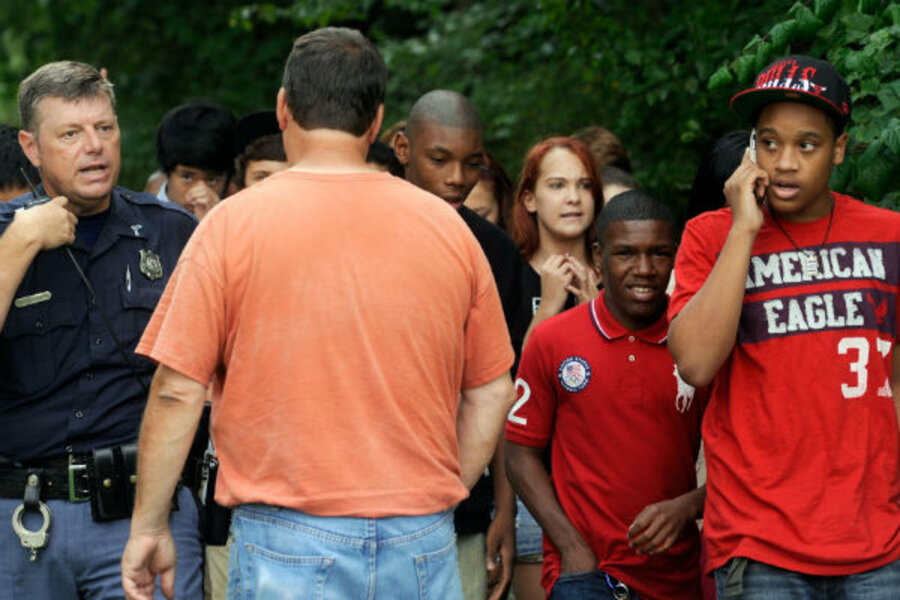Perry Hall High School: Shooting and bullying? Not so fast
Loading...
It didn’t take long after Monday’s shooting at Maryland’s Perry Hall High School for the magic word to come up in press reports. Bullying.
Soon after 15-year-old Robert Wayne Gladden Jr. allegedly opened fire in his school’s crowded cafeteria, critically injuring at least one other student, a reporter showed up at his family’s home and asked why this might have happened. The boy was bullied, answered his father, according to the Associated Press.
Another family member then said that they were all horrified, and were praying for the victims.
The conversation about bullying and its impact has already started. Even though there’s not much additional information about the case at this point.
While there have been rumors about social media sites and networking profiles that reveal a boy with goth fashion and angry messages, police have cautioned reporters that these reports may not be substantiated.
So this bullying conversation, one could argue, is dangerous.
We’ve written before about how the concept of “bullying” has become so broad, so trendy, so amorphous, that it has all but lost any specific meaning. Over the past months, for instance, we’ve read news of a six-year-old “bully” getting suspended from school for singing popular song lyrics in the lunch line and a 68-year-old bus monitor getting “bullied” by a group of students.
(Neither of which seem to fit the US Department of Health and Human Service’s definition of bullying, which says the act involves aggressive behavior among school-aged children and involves a real or perceived power imbalance.)
But in addition to de-toothing the idea of bullying – and possibly undermining the response to a very real problem – some child development experts say the knee-jerk connecting of “bullying” to all sorts of violent behavior, from suicide to school shootings, threatens to normalize these actions.
In other words, if it starts becoming common understanding that the “normal” response to being bullied is to commit suicide, or to get a gun and start shooting classmates, then you start setting a clear social pathway to those behaviors.
In reality, meanwhile, the connection between bullying and these outcomes is far more tenuous.
Author Dave Cullen, who was one of the journalists who first reported on the 1999 Columbine High School shootings, spent the next decade researching his book "Columbine" about what had happened there, and why; and untangling the myths of trench coats and outsiders he says he and his media colleagues created.
RELATED: 5 top childcare options from nanny to day care
“We all knew what happened there, right?” he wrote about Columbine in a New York Times opinion piece soon after this summer’s mass shooting in Aurora, Colo. “Two outcast loners exacted revenge against the jocks for relentlessly bullying them.
“Not one bit of that turned out to be true.”
Perry Hall High School is, in many ways, a typical suburban high school. It is big and low-slung and brick; it sits in an area outside of Baltimore that is considered generally safe and middle class. Also typical – depressingly – is the narrative starting to emerge from Monday’s fear and violence there. But perhaps this time we will learn to stop and wait, and recognize that the forces behind horrific events like the one in Perry Hall are far more complicated, and individual, than any buzz word.






